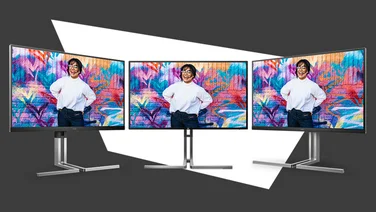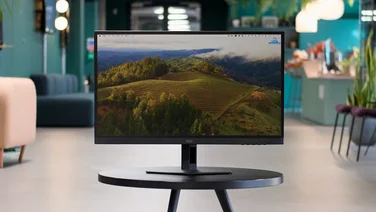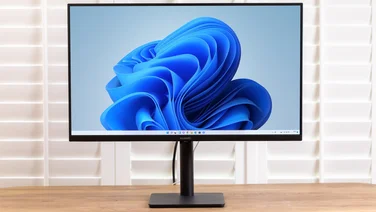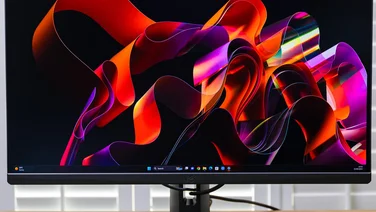To help us provide you with free impartial advice, we may earn a commission if you buy through links on our site. Learn more




We’ve reviewed a slew of LED monitors this year, but until now, all have used ‘budget’ TN LCD panels. TN stands for Twisted Nematic, and such panels are the cheapest variety and tend to have fast response times.
Compared to VA (Vertical Alignment) panels as used by the 24in VW2420H, TN panels have worse viewing angles, poorer contrast and duller colours. However, VA panels are more expensive and tend to have slower response times.
In the VW2420H’s case, the panel has an 8ms response time. Although this may sound a lot worse than the 2ms times of many TN panels, most people wouldn’t be able to tell the difference. Watching our test videos, including a mix of 24, 25 and 30fps material, we certainly didn’t notice any ghosting during fast-paced sequences. Playing Call of Duty: Modern Warfare 2, we saw a tiny amount of blurring when panning, but nothing that would cause even avid gamers concern.
We also saw the 3:000:1 native contrast ratio in action: blacks were much deeper and more convincing than on any LED TN panel we’ve seen. Plus, colours were bolder and more saturated. Viewing angles are better, too, but BenQ has opted for an unusual coating which is half way between matt and gloss, so reflections tend to take over the more you move off centre; the same is true in dark scenes in games and movies.
The only other criticism is that the image looked slightly cold, and no amount of tweaking of the colour temperature and other settings could completely eliminate this. There are plenty of controls, including individual red, green and blue channels and gamma, but the hue and saturation controls remained tantalisingly greyed-out. Preset colour modes include the ultra-dim Eco mode, Standard, Game, Movie, Photo and sRGB. You can cycle between these using one of the monitor’s buttons, which is handy as we found ourselves using the photo mode to view photos, and the standard mode – with its better contrast – for office work and email.
The Eco mode reduces brightness to 28 per cent, which is only usable in a dark room, but we were surprised that power consumption was still relatively high at 21W. In Standard mode, the VW2420H used 36W, which is what we’d expect a traditional LCD monitor with CCFL backlights to consume.
So while this monitor may not save any money on your electricity bill, it should still add a bit of class to your desk. It’s just 17mm thick at the edges, and a glossy bezel and stand. The gold circle on the base is a little odd, but we can live with it. We like the convenient rear-facing HDMI, DVI and VGA ports – there’s also a headphone output, but it would have been more useful if it were on the front.
We’re not fans of the external power supply – a trade-off of the thin design – and the two-year warranty is a year shorter than most monitors. Factor in the cold-looking colours and higher than expected power consumption and the £175 isn’t quite as tempting as we initially thought it would be. If the colours and power don’t bother you, it’s a fine choice, but it misses out on an award for these reasons.






